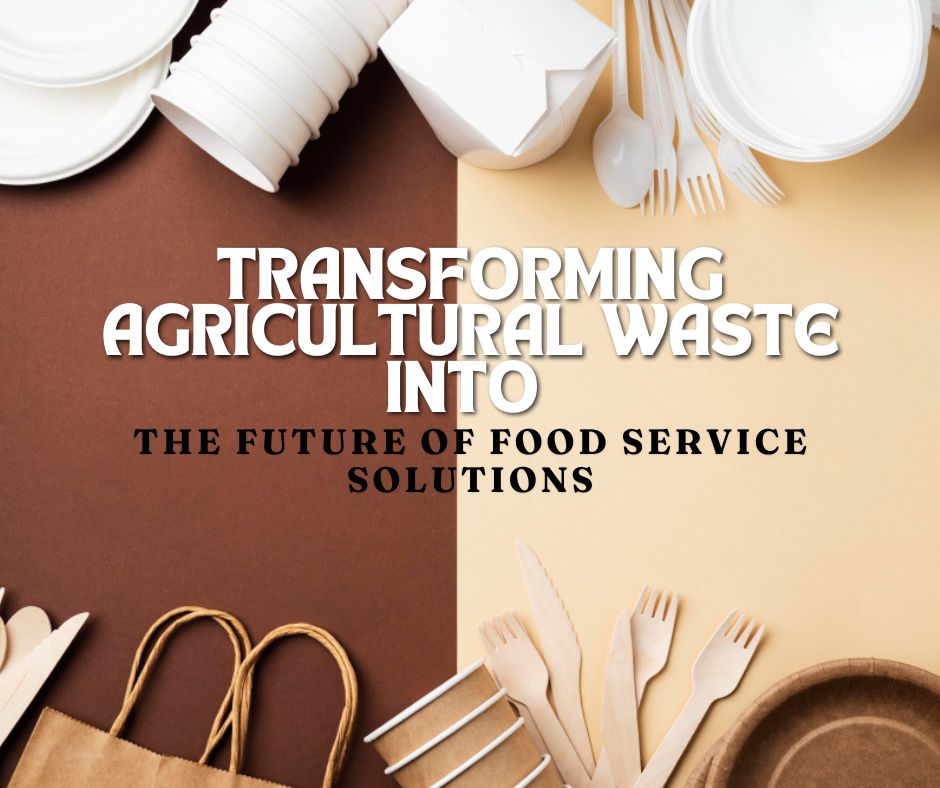In our quest for sustainable living, one solution is revolutionizing the food service industry by turning agricultural waste into a valuable resource. This innovation, known as Bagasse Tableware, is not only eco-friendly but also paves the way for a greener future in food service solutions. Let’s delve into what bagasse is, how it’s transformed into tableware, and why it stands out as a superior alternative to traditional materials.
What is Bagasse?
Bagasse is the fibrous residue left after extracting juice from sugarcane stalks during the sugar production process. Traditionally, this byproduct was either burned, contributing to air pollution, or discarded as waste. However, the advent of sustainable practices has given bagasse a new lease on life, transforming it into an eco-friendly material used to create biodegradable and compostable tableware.
The Journey from Waste to Tableware
Bagasse tableware undergoes a fascinating transformation process, converting agricultural waste into practical and sustainable food service products. Here’s a look at the steps involved:
1. Collection and Cleaning: After sugar extraction, the remaining bagasse is collected and cleaned to remove impurities. This preparation ensures that the final product is free from contaminants and suitable for food use.
2. Pulping and Molding: The cleaned bagasse is then pulped, creating a slurry-like mixture. This pulp is poured into molds of various shapes and sizes to form plates, bowls, cups, and other tableware items. The molds are designed to ensure uniform thickness and strength.
3. Pressing and Drying: The molded pulp undergoes high-pressure pressing, removing excess moisture and enhancing durability. The pressed items are then dried to solidify their structure, making them ready for use.
4. Finishing Touches: Finally, the tableware is trimmed and polished to ensure smooth edges and a refined appearance. Some items may also receive a coating to enhance their resistance to heat and moisture.
Environmental Benefits of Bagasse Tableware
Bagasse tableware offers numerous environmental advantages over traditional disposable tableware made from plastics and paper:
· Biodegradability and Compostability: Unlike plastic, which can take hundreds of years to decompose, bagasse tableware breaks down naturally within a few months. It can be composted in commercial facilities or at home, returning valuable nutrients to the soil without leaving harmful residues.
·
· Reduced Carbon Footprint: Using bagasse helps lower greenhouse gas emissions associated with plastic production and disposal. The process of converting bagasse into tableware also consumes less energy compared to manufacturing plastic or paper products.
· Resource Conservation: By repurposing agricultural waste, bagasse tableware reduces the need for virgin materials, thereby conserving natural resources. It also decreases the demand for trees used in paper production, aiding in forest conservation.
Bagasse Tableware in Practice
Many food service businesses are already reaping the benefits of switching to bagasse tableware. From small cafes to large catering services, here’s how bagasse is making a difference:
· Cafes and Restaurants: By opting for bagasse tableware, cafes and restaurants can offer an eco-friendly dining experience. These establishments reduce their environmental impact and appeal to environmentally-conscious customers who prefer sustainable options.
· Events and Catering: Bagasse tableware is ideal for events and catering, where disposable items are often necessary. Its sturdy nature can handle a variety of foods, and it’s easily compostable after use, simplifying waste management for large gatherings.
·
Challenges and Opportunities
While bagasse tableware is an excellent alternative to traditional disposables, its adoption comes with challenges and opportunities:
· Cost Considerations: Initially, bagasse products might be more expensive than their plastic counterparts. However, as demand grows and production scales up, costs are likely to decrease. Additionally, the environmental benefits often outweigh the price difference for businesses committed to sustainability.
· Consumer Education: Educating consumers about the benefits and proper disposal of bagasse tableware is crucial. Clear labeling and information on composting can enhance the product’s effectiveness and ensure it contributes to a circular economy.
·
Conclusion: A Green Future with Bagasse
Bagasse tableware is a shining example of how we can turn waste into a valuable resource. By adopting bagasse in the food service industry, we take significant steps towards reducing plastic pollution, conserving natural resources, and promoting sustainability. As more businesses and consumers embrace this eco-friendly option, we move closer to a future where waste is minimized, and nature thrives.
Let’s champion the use of bagasse tableware and lead the charge in transforming agricultural waste into a beacon of environmental stewardship. Together, we can create a cleaner, greener world, one plate at a time.
Keywords: Bagasse tableware, sustainable food service, biodegradable tableware, compostable tableware, eco-friendly dining solutions.
Feel free to share your thoughts or ask questions in the comments below!





Comments